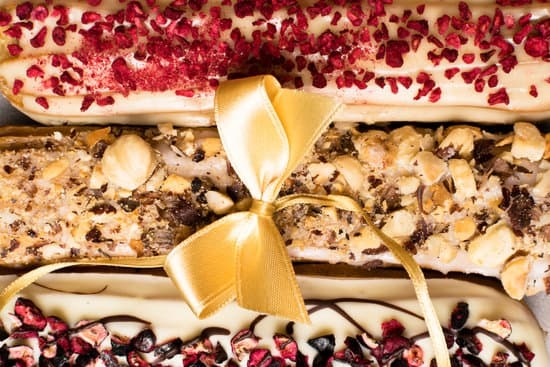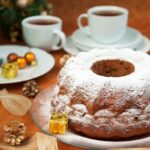Isomalt is a versatile ingredient that has gained popularity among cake decorators for its unique properties and ease of use. In this article, we will explore how to use isomalt in cake decorating, from melting and molding techniques to creating intricate designs and troubleshooting common issues.
Isomalt is a type of sugar alcohol that is often used as a sugar substitute in confectionery. One of its key advantages in cake decorating is its stability and resistance to humidity, making it ideal for creating elaborate decorations that can withstand various environmental conditions. Whether you’re looking to add a touch of elegance to your cakes or create stunning showpieces, isomalt opens up a world of creative possibilities.
When it comes to using isomalt in cake decorating, there are different types available on the market, including powdered forms and pre-made sticks or nibs. Each type has its own advantages and uses, so it’s essential to choose the right kind based on your specific project requirements. Additionally, understanding the safety precautions when working with isomalt is crucial to ensure a successful and enjoyable decorating experience.
Benefits of Using Isomalt in Cake Decorating
Isomalt is a versatile sugar substitute that is commonly used in cake decorating for creating stunning and intricate designs. One of the main benefits of using Isomalt in cake decorating is its stability and durability. Unlike traditional sugar or fondant decorations, Isomalt decorations are less prone to melting or deforming under heat or humidity. This makes Isomalt ideal for creating elaborate cake decorations that need to withstand various environmental conditions.
Another advantage of using Isomalt in cake decorating is its clarity and glass-like appearance when melted and molded. This transparency allows for a wide range of creative possibilities, such as making realistic gemstones, delicate sugar sculptures, or even edible stained glass windows for cakes. Isomalt can also be colored with food coloring to achieve vibrant hues without affecting its clarity, giving decorators full control over the color palette of their creations.
| Benefits | Description |
|---|---|
| Stability and Durability | Isomalt decorations are less likely to melt or deform under heat or humidity. |
| Clarity and Transparency | Isomalt offers a glass-like appearance when melted, allowing for creative possibilities. |
| Versatility in Texture and Shape | Isomalt can be molded into various shapes or pulled into unique designs for intricate decorations. |
Overall, incorporating Isomalt into your cake decorating repertoire can take your creations to the next level with its unique properties and endless design potential. Mastering how to use Isomalt in cake decorating opens up a world of possibilities for creating visually stunning cakes that are sure to impress any audience.
Types of Isomalt Available for Cake Decorating
Isomalt is a versatile ingredient that has become increasingly popular in the world of cake decorating. When it comes to working with Isomalt for your cake decorations, there are different types of Isomalt available on the market. Understanding the different types can help you choose the right product for your specific needs.
One of the most common types of Isomalt used in cake decorating is the regular Isomalt crystals. These crystals are perfect for melting down and molding into various shapes and designs. They have a clear appearance once melted, making them ideal for creating intricate decorations such as gemstones or sugar sculptures.
Another type of Isomalt that has gained popularity is pre-colored Isomalt. This type of Isomalt comes in a variety of vibrant colors, eliminating the need for additional coloring. Pre-colored Isomalt is convenient for decorators who want to save time on the coloring process and achieve consistent results.
| Type of Isomalt | Description |
|---|---|
| Regular Isomalt Crystals | Perfect for melting down and molding into shapes, clear appearance |
| Pre-Colored Isomalt | Available in vibrant colors, eliminates need for additional coloring, convenient for saving time |
Whether you choose regular Isomalt crystals or pre-colored options, understanding the types of Isomalt available can enhance your cake decorating experience. Experiment with different varieties to discover which works best for your creative projects and enjoy exploring how to use Isomalt in cake decorating to elevate your designs to new heights.
Safety Precautions When Working With Isomalt
Isomalt is a popular choice for cake decorators looking to add a touch of elegance and artistry to their creations. However, working with Isomalt requires caution and adherence to safety precautions to ensure a successful outcome and avoid accidents. Here are some important safety measures to keep in mind when using Isomalt in cake decorating:
- Wear protective gear: When handling Isomalt, it is essential to protect yourself by wearing gloves, long sleeves, and safety glasses. This will help prevent burns and injuries from hot melted Isomalt.
- Work in a well-ventilated area: The process of melting Isomalt can produce fumes that may be irritating to the respiratory system. It is recommended to work in a well-ventilated area or use a fume hood to minimize exposure to these fumes.
- Use caution when melting Isomalt: When melting Isomalt, it is important to do so slowly and carefully. High heat can cause the Isomalt to bubble and splatter, potentially causing burns. Use a candy thermometer to monitor the temperature and avoid overheating the Isomalt.
In addition to these safety precautions, it is also important to be mindful of hot surfaces when working with melted Isomalt. Always use insulated gloves or tools when handling hot molds or trays, as they can cause serious burns if touched directly. By following these safety guidelines, you can enjoy using Isomalt in your cake decorating projects while minimizing any risks involved.
Step-by-Step Guide on How to Melt and Mold Isomalt for Cake Decorations
Isomalt is a versatile sugar substitute that has gained popularity in the world of cake decorating due to its ability to create stunning and intricate designs. Learning how to use Isomalt in cake decorating can open up a whole new world of creative possibilities for your baked goods. In this guide, we will take you through the step-by-step process of melting and molding Isomalt for creating beautiful decorations on your cakes.
To begin working with Isomalt, you will need the following materials:
- Isomalt crystals
- Heat-resistant gloves
- Silicone molds or parchment paper
- Candy thermometer
- Heatproof container
Here is a simple step-by-step guide on how to melt and mold Isomalt for cake decorations:
- Measure out the desired amount of Isomalt crystals according to your recipe.
- Place the Isomalt crystals in a heatproof container and melt them in the microwave or over a double boiler. Be sure to monitor the temperature with a candy thermometer to prevent overheating.
- Once the Isomalt has melted and reached the desired temperature, carefully pour it into your silicone molds or onto parchment paper. Use heat-resistant gloves to prevent burns while handling hot Isomalt.
- Allow the Isomalt decorations to cool and harden before carefully removing them from the molds or parchment paper. Your beautiful Isomalt decorations are now ready to be placed on top of your cakes.
By following these steps, you can easily start incorporating Isomalt decorations into your cake decorating repertoire and impressing your friends and family with your newfound skills. Once you get the hang of working with Isomalt, you’ll be able to create intricate designs that will elevate your cakes to a whole new level of artistry.
Techniques for Creating Intricate Designs With Isomalt
Isomalt is a versatile and popular ingredient in the world of cake decorating due to its unique properties that make it ideal for creating intricate designs. When used correctly, Isomalt can be melted, molded, and shaped into various shapes and forms, allowing for stunning decorations on cakes and other baked goods. In this section, we will explore some techniques for creating intricate designs with Isomalt.
Creating Isomalt Gems
One of the most popular ways to use Isomalt in cake decorating is to create gem-like decorations. To do this, start by melting your Isomalt according to the package instructions. Once melted, carefully pour the hot Isomalt into gem molds or onto a silicone mat to cool. Once the Isomalt has hardened, carefully remove the gems from the molds or mat and use them to adorn your cakes for a glamorous touch.
Making Isomalt Ribbons and Bows
Another technique for using Isomalt in cake decorating is to make delicate ribbons and bows to add a touch of elegance to your creations. To create ribbons and bows with Isomalt, melt the sugar substitute until it reaches a clear liquid consistency.
Then, using a spoon or piping bag, carefully drizzle or pipe the melted Isomalt onto a non-stick surface in ribbon-like patterns. Allow the ribbons to cool and harden before gently peeling them off the surface and arranging them on your cake.
Sculpting With Isomalt
For those looking to take their cake decorating skills to the next level, sculpting with Isomalt can create truly stunning designs on cakes. Whether you’re crafting delicate flowers or intricate figurines, molding shapes with Isomalt can add a wow factor to your confections. Start by melting small amounts of Isomalt at a time and shaping it while still pliable. Use tools like silicone molds or hand sculpting techniques to bring your creative vision to life on your cakes.
By mastering these techniques for creating intricate designs with Isomalt, you can elevate your cake decorating skills and impress guests with unique and eye-catching edible creations at your next celebration.
Tips for Troubleshooting Common Issues When Working With Isomalt
Isomalt Troubleshooting
When working with Isomalt in cake decorating, it is important to be prepared for some common issues that may arise during the process. One common problem that decorators face is Isomalt becoming cloudy or crystallized after melting. This can happen if the Isomalt is overheated or if there are impurities present in the mixture. To prevent this issue, make sure to heat the Isomalt slowly and consistently, stirring gently to avoid introducing air bubbles.
Avoiding Sticky Situations
Another issue that decorators often encounter when working with Isomalt is having their creations stick to the molds or surfaces they are placed on. To prevent this from happening, it is crucial to properly prepare your molds by greasing them lightly with cooking spray or oil before pouring in the melted Isomalt. Additionally, allowing the Isomalt decorations to cool completely before removing them from the molds can help ensure they come out cleanly.
Maintaining Clarity and Shine
Maintaining the clarity and shine of Isomalt decorations is essential for achieving a professional look on your cakes. If you find that your Isomalt creations are looking dull or foggy, try polishing them gently with a soft cloth or paper towel. You can also use a small amount of vegetable oil to restore shine to your decorations. By taking these extra steps, you can enhance the overall appearance of your cake designs and impress your clients and guests.
With these troubleshooting tips in mind, you can confidently work with Isomalt in your cake decorating projects and overcome any challenges that may arise along the way. Remember that practice makes perfect, so don’t be discouraged if you encounter setbacks initially. With patience and persistence, you will soon master the art of using Isomalt to create stunning decorations for your cakes.
Creative Ideas for Incorporating Isomalt Decorations on Cakes
Isomalt is a versatile and exciting medium to use in cake decorating, offering endless possibilities for creating stunning and intricate designs on cakes. From elegant sugar flowers to delicate decorations, Isomalt can elevate the look of any dessert and add a touch of sophistication to your baked creations. In this concluding section, we will explore some creative ideas for incorporating Isomalt decorations on cakes, along with tips and techniques on how to use this sugar substitute effectively.
One popular way to use Isomalt in cake decorating is to create beautiful and unique cake toppers. Whether you’re looking to add a personalized touch to a special occasion cake or simply want to make a statement with your dessert, Isomalt can be molded and shaped into various designs such as initials, hearts, stars, or even intricate lace patterns. These handmade decorations can truly make your cake stand out from the rest and showcase your creativity as a baker.
Another creative idea is to incorporate Isomalt shards or shards of glass into your cake design. By melting Isomalt and pouring it onto a greased surface, you can create translucent shards that resemble glass.
These shards can be used to add a modern and edgy element to your cakes, whether as individual accents or cascading down the sides for a dramatic effect. With some practice and patience, you can master the art of working with Isomalt and impress your guests with visually stunning desserts.
In conclusion, using Isomalt in cake decorating opens up a world of possibilities for adding elegance and flair to your creations. By following safety precautions, mastering melting techniques, and experimenting with various designs, you can harness the full potential of this versatile medium in your baking endeavors. So go ahead and unleash your creativity with Isomalt – the results are sure to be sweet success.
Frequently Asked Questions
How Do You Decorate a Cake With Isomalt?
Decorating a cake with isomalt involves melting the isomalt pellets until they become liquid, then using a spoon or piping bag to pour the melted isomalt onto a non-stick surface. You can create decorations like flowers, shapes, or even shards by pouring the isomalt in desired designs and letting them cool and harden before placing them on the cake.
How Far in Advance Can You Make Isomalt Decorations?
Isomalt decorations can be made in advance as they have a long shelf life when stored properly. You can make isomalt decorations weeks or even months ahead of time if kept in an airtight container away from moisture and sunlight. This allows you to have intricate decorations ready to use when needed for your cakes or desserts.
How Do You Pour Isomalt Into Molds?
Pouring isomalt into molds requires careful handling due to its high temperature once melted. It’s crucial to wear gloves to protect against burns while pouring isomalt into heat-resistant silicone molds.
Slowly pour the liquid isomalt, ensuring it fills each cavity evenly without creating air bubbles. Let the molds cool completely before removing the hardened isomalt shapes for decorating purposes.

Welcome to our cake decorating blog! My name is Destiny Flores, and I am the proud owner of a cake decorating business named Cake Karma. Our mission is to provide delicious, beautiful cakes for all occasions. We specialize in creating custom cakes that are tailored specifically to each customer’s individual needs and tastes.





